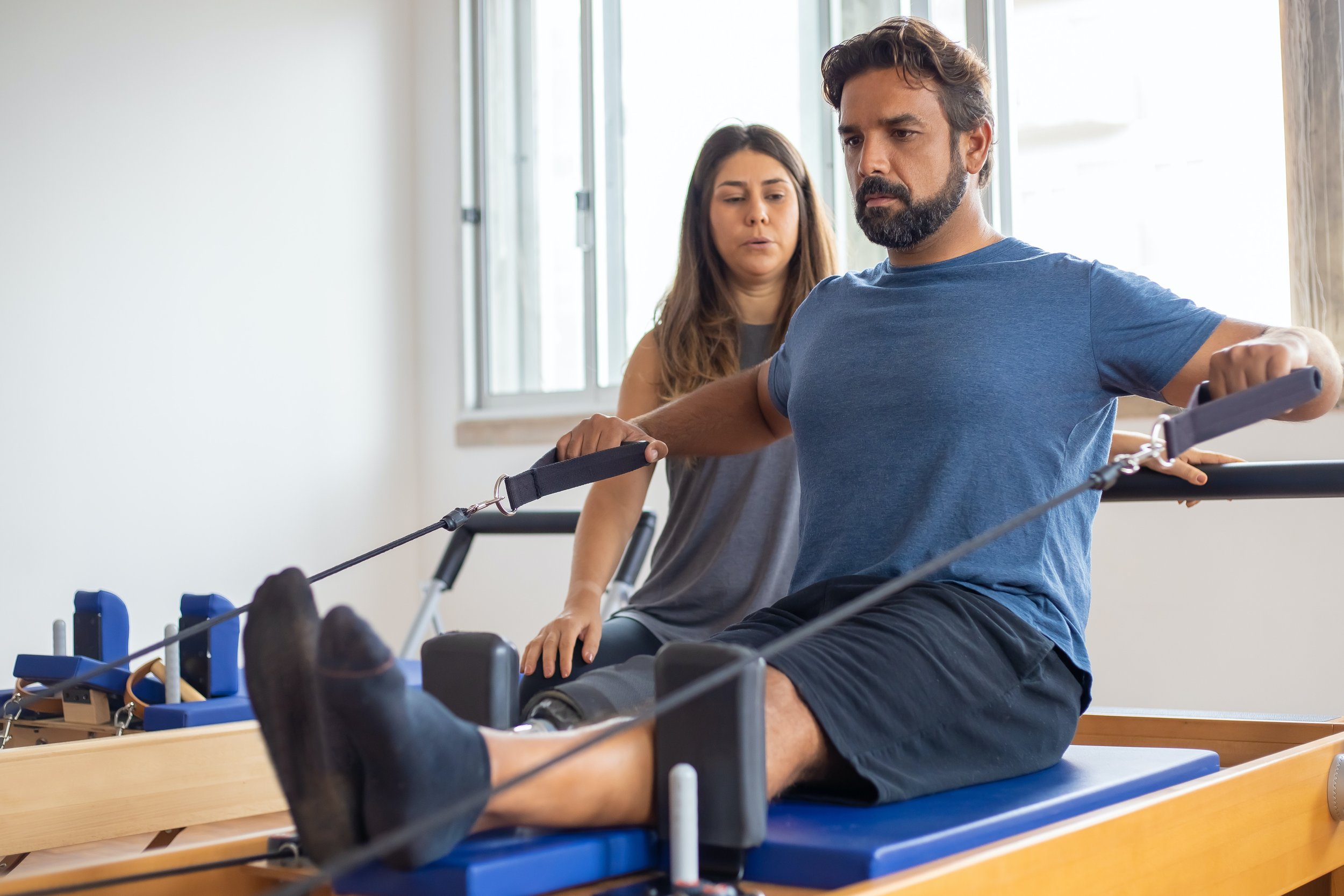Recover from Pain with Reformer Machine Exercises
Joint pain happens to millions of people every year, but it doesn't have to. Early intervention can stop your joint pain from getting worse, and in some cases even turn it around.
Joint pain happens to millions of people every year, but it doesn't have to. Early intervention can stop your joint pain from getting worse, and in some cases even turn it around.
Joint health is important for your overall health: when you take care of the parts that move—your hands, elbows, knees and ankles—you may be preventing a more serious issue down the road. In fact, arthritis affects over 50 million Americans today; that's nearly one in five adults! (The Arthritis Foundation)
That's why it's so important for you to know how to prevent joint pain as well as how to help your body recover if you're suffering from it already.
You may be at risk of joint pain if you have a family history of arthritis or other autoimmune diseases that affect joints. Older age also increases your risk, but that doesn't mean you're helpless if you're younger!
If you have a family history of arthritis or other autoimmune diseases that affect joints, you may be at risk of joint pain. Older age also increases your risk, but that doesn't mean you're helpless if you're younger!
Other causes include injury and overuse. If you've been running around playing soccer all day every day since childhood, for example, some of your joints would likely start to hurt as a result. Genetic disorders are also a common cause of joint pain; for example, Marfan syndrome is often linked to joint problems in the hands and feet (Feder et al., 2017). Even if there's no underlying condition causing the pain in your joints yet—or even if something is causing the pain—you may still experience mild discomfort from time to time simply because something like arthritis hasn't kicked in yet!
Surprisingly, being overweight can increase the wear and tear on your joints and cause the cartilage to become brittle and break down more easily. Excess body weight puts pressure on your cartilage, which wears it down and makes it thinner over time. Often, this is reversible with weight loss.
If you're overweight, losing weight can help reduce the wear and tear on your joints. Excess body weight puts pressure on the joints, which wears down the cartilage that cushions them. Being overweight also increases inflammation in the lymph nodes, which leads to more pain in your joints.
To avoid joint pain from being overweight, it's important to lose weight if necessary. This isn't just about looking good—it's about avoiding serious health problems like heart disease and diabetes as well!
It's important to note that if you lose too much weight too quickly (i.e., crash dieting), this can actually make joint pain worse because of how fast it pulls on tendons and ligaments surrounding the joints. But following a healthy diet plan over time should help with both joint health and overall mobility by strengthening muscles instead of straining them through strenuous workouts or sudden movements like heavy lifting
If you're experiencing knee pain when you squat or exercise or you notice stiffness or creaking in your knees, consult a doctor about whether you might need to supplement your exercise with joint-strengthening regimens using light weights or resistance bands.
If you're experiencing knee pain when you squat or exercise or you notice stiffness or creaking in your knees, consult a doctor about whether you might need to supplement your exercise with joint-strengthening regimens using light weights or resistance bands.
In addition to the floor exercises described above, here are two simple ways to use light weights in conjunction with the reformer machine for greater flexibility and range of motion:
Place a book on one of the round pegs at either end of the reformer machine's footboard (or simply place it on an area where there is no peg). Use this as an anchor point while performing knee extensions (see below). You can also use a weight plate instead of a book; just make sure it doesn't slide off! So get creative—you can even anchor yourself using folded towels if need be! The key is just finding something that works for you and won't fall off during any part of this routine. Note: If using additional resistance like dumbbells isn't working well enough due to lack of strength/flexibility, try alternating between leg lifts while holding onto dumbbells held at waist level versus shoulder height until progress is made. Once progress has been made, increase the weight to challenge yourself further as needed."
Staying in motion is the key to staying healthy no matter how old you are. It's never too late to start an exercise program that increases the strength and flexibility of your joints.
Staying in motion is the key to staying healthy no matter how old you are. It's never too late to start an exercise program that increases the strength and flexibility of your joints.
Even if you can't walk or get up from a chair without some pain, there are things you can do at home to improve your situation. You don't have to have every joint in your body replaced with artificial parts before you begin an exercise program for joint health—just learn a few simple moves that will help keep those old bones moving so they don't hurt as much when arthritis sets in later on down the road!
Take action now if you want to avoid future problems with joint pain.
If you're experiencing joint pain and want to avoid future problems, don't wait until you can barely move. Take action now so that you can enjoy pain-free movement in the long run. It's never too late to start making positive changes. Contact your doctor today to get started on the path to recovery or check out our guide on what a reformer machine is if you're ready to get started right away!

